Preserving Heritage: Pakistan’s Rich Tapestry of Handicrafts, Dress, Shoes, Household Items, and Antique Goods.
Preserving Heritage: Pakistan’s Rich Tapestry of Handicrafts, Dress, Shoes, Household Items, and Antique Goods
Introduction:
In the heart of South Asia lies a country known not only for its breathtaking landscapes but also for its rich cultural heritage. Pakistan, a land of diverse cultures and traditions, boasts a vibrant array of handicrafts, traditional dress, exquisite shoes, intricate household items, and captivating antique goods. These treasures are not just products; they are a manifestation of the country’s history, artistry, and craftsmanship that have been passed down through generations.
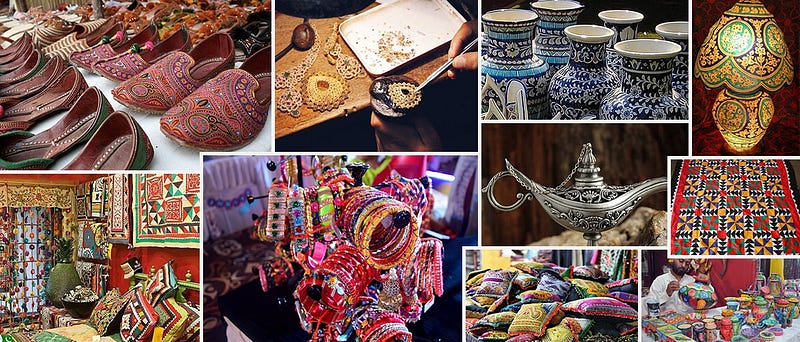
Handicrafts: Crafting Culture and Tradition
Pakistan’s handicrafts are a testament to the skill and creativity of its artisans, with each piece narrating a story that resonates with the country’s culture. From the ornate woodwork of the Swat Valley to the intricate mirrorwork of Sindh, handicrafts are deeply rooted in local communities.
Painstaking work has forever been a significant part of Pakistani culture, with a long history of customary abilities passed down from one generation to another. Pakistan is a country that is home to different social gatherings, each of which has its own specialties and customs.
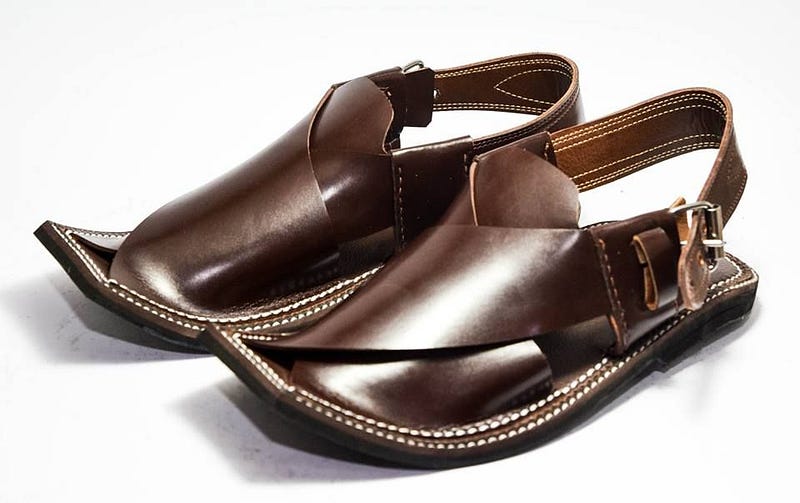
Peshawari Chappal
Pakistani Peshawari Chappal, a timeless footwear icon, captures the essence of comfort and culture. Handcrafted with expertise, its distinctive design features interwoven leather and a closed-toe front. Originating from Peshawar, these sandals evoke tradition and elegance, complementing both casual and semi-formal attire.
With each pair echoing the region's artistic heritage, Peshawari Chappals are a symbolic fusion of style and craftsmanship, representing Pakistan's enduring connection to its roots while embracing contemporary fashion sensibilities.
The Peshawari chappal, with its unique design and intricate leatherwork, is a symbol of the northwest region’s heritage. These sandals not only offer comfort but also reflect the craftsmanship that has been perfected over centuries.

Multani Pottery
Multan, often referred to as the “City of Saints,” is also renowned for its vibrant blue pottery. The delicate designs and vibrant hues of these pottery pieces are a testament to the artistic spirit of the city.
Multani pottery originates from Multan, Pakistan, known for its distinctive blue and white patterns. Crafted by skilled artisans, it reflects a fusion of Persian and local aesthetics. The intricate designs on plates, vases, and tiles showcase the city's cultural heritage and artistic prowess, making Multani pottery a true masterpiece.
Kalash Embroidery
Nestled in the hills of Chitral, the Kalash people produce intricately embroidered textiles that tell stories of their unique culture and way of life. The embroidery is a window into their world, showcasing their beliefs and traditions.
Kalash embroidery, hailing from the Kalash Valley in Pakistan, is a vibrant craft tradition. Adorned with colorful threads and intricate motifs, it captures the essence of the valley's rich culture and history.
Traditional Dress: A Tapestry of Color and History
Pakistan’s traditional dress is a kaleidoscope of colors and designs, each one echoing the diverse cultural heritage of the nation.
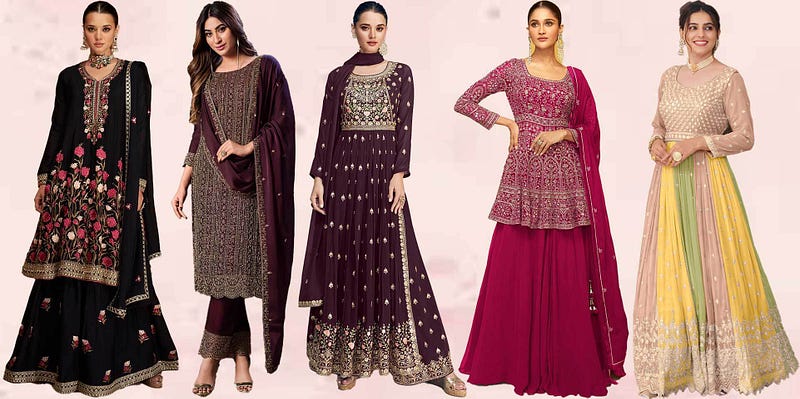
Shalwar Kameez
People of all ages and genders dress in the shalwar kameez, which is the traditional Pakistani garment. It comes in numerous textures, varieties, and styles, each an impression of the wearer’s character and local impacts.
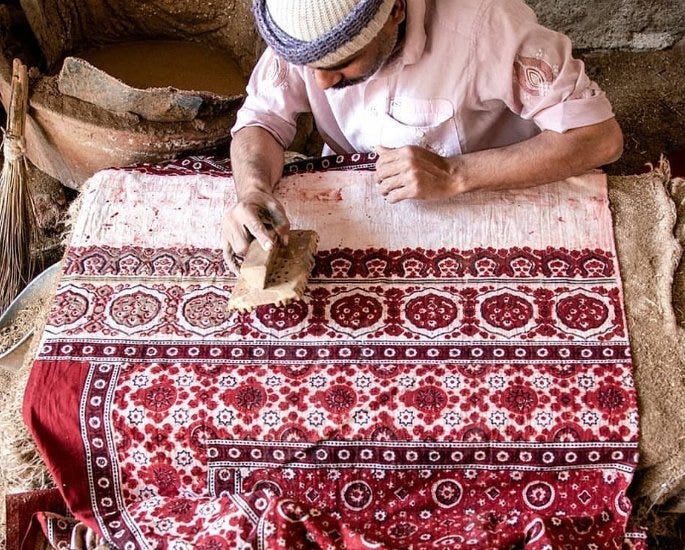
Sindhi Ajrak
The ajrak, a block-printed shawl, is a symbol of Sindhi culture. Its intricate geometric patterns and rich colors have become iconic, representing the region’s identity and pride.
Sindhi Ajrak is a centuries-old art form originating from Sindh, Pakistan. This vibrant textile showcases intricate geometric patterns in rich indigo tones, symbolizing the region's cultural identity. Crafted with traditional block-printing techniques, Ajrak reflects heritage and heritage, often worn as a shawl or accessory, preserving a piece of Sindhi tradition.
Balochi Embroidery
Balochistan’s embroidery techniques celebrate skill and tradition. Balochi dresses adorned with intricate embroidery are beautiful and carry stories of the region’s history and values.
Balochi Embroidery, a treasured Balochistan craft, is a testament to the region's artistic ingenuity. Renowned for its vivid colors and mirror work, this embroidery style adorns garments, accessories, and home decor. Each piece narrates stories of Balochi culture, history, and identity, making it a cherished heritage art form that continues to captivate and inspire.
Shoes: Where Tradition Meets Style
In Pakistan, shoes are more than footwear; they are a statement of style, tradition, and craftsmanship."Blend tradition with style through Pakistan’s shoes, where cultural heritage and modern flair coalesce in stunning footwear creations. Pakistan’s shoes merge tradition with style, reflecting the nation’s rich cultural heritage with every step. Walk through history elegantly.
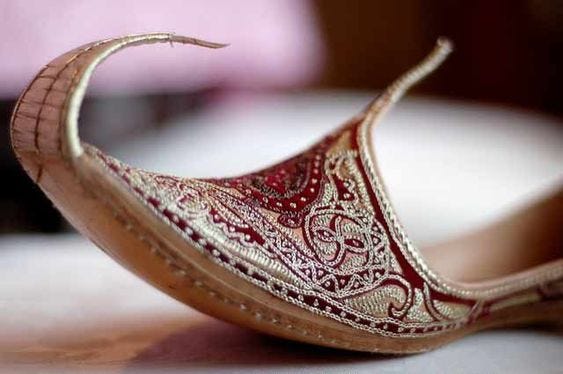
Khussa
The khussa is a traditional handmade shoe known for its pointed toe and intricate embellishments. Worn on special occasions, these shoes embody the essence of Pakistani aesthetics.
The Pakistani Khussa, a marvel of craftsmanship, is a traditional slipper brimming with cultural significance. Crafted by skilled artisans, it showcases intricate embroidery, vibrant colors, and detailed beadwork. Worn on celebratory occasions or casual days, the Khussa embodies Pakistan's rich heritage and artistic legacy. With each pair representing a fusion of tradition and modernity, it's a timeless symbol of style, comfort, and cultural pride.

Kolhapuri Chappal
Hailing from Sindh, the Kolhapuri chappal is a blend of comfort and elegance. These flat sandals, often adorned with beads and embroidery, have found their way into modern fashion.
Pakistan's Kolhapuri Chappal, a fusion of comfort and style, reflects traditional artistry. Handmade with care, it features intricate leather weaving and a distinctive design that originated in Kolhapur, India.
This footwear seamlessly blends cultural heritage with modern fashion, making it a beloved choice for both casual and festive occasions. With each step, Kolhapuri Chappals carry the essence of craftsmanship and history, embodying the spirit of Pakistan's cultural diversity.

Household Items
Pakistan's household textiles encompass a diverse array of artistry, from intricately woven rugs to finely embroidered tablecloths. These textiles not only serve functional purposes but also narrate tales of the country's cultural history. Whether it's the geometric patterns of Sindhi ralli quilts or the delicate motifs adorning cushions, each piece reflects regional aesthetics and craftsmanship.
Pakistan's household textiles blend tradition with contemporary lifestyles, bringing warmth, color, and a touch of heritage into homes while preserving the legacy of generations past. Pakistan’s household items are a fusion of functionality and beauty, showcasing the skill of artisans who transform everyday objects into works of art.
Wrought Iron Craftsmanship
Pakistani wrought iron craftsmanship stands as a testament to the fusion of artistry and functionality. From intricately designed gates that guard historical sites to beautifully forged furniture and decor pieces, this craft intertwines tradition with innovation. Skilled artisans manipulate iron into ornate patterns, embodying the rich cultural tapestry of Pakistan. These enduring creations showcase not only the mastery of metalwork but also the preservation of heritage, as each piece narrates stories of a bygone era while seamlessly blending into modern aesthetics.
From gates to furniture, Pakistan’s wrought iron craftsmanship is awe-inspiring. Intricately designed pieces are not only functional but also add an artistic touch to homes.

Truck Art
Pakistani Truck Art, a riot of colors and intricate designs adorning vehicles, is a cultural phenomenon that embodies the nation's vibrant spirit. Transforming ordinary trucks into moving canvases, this art form showcases regional motifs, calligraphy, and ornate patterns. With roots in rural traditions, it has evolved into a visual feast that captures Pakistan's cultural diversity. Each brushstroke tells a story, reflecting pride, folklore, and creativity, and turning the roads into a dynamic display of the country's artistic soul.
Pakistan’s iconic truck art has transcended the roads and found its way into homes. Colorful paintings and embellishments on household items like tea sets and trays bring a touch of vibrant culture to everyday life.
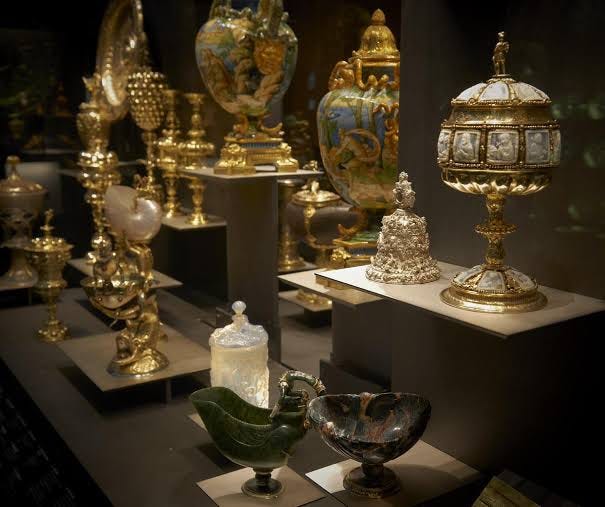

Antique goods: Echoes of the past
Pakistani antique goods whisper tales of bygone eras, preserving the essence of history and culture. These treasures, ranging from vintage jewelry and intricate pottery to weathered manuscripts, offer a glimpse into the past. Each item carries the imprints of craftsmanship and heritage, telling stories of dynasties, traditions, and lifestyles.
As time capsules of Pakistan's diverse history, these antique pieces bridge the gap between then and now, reminding us of the beauty, innovation, and resilience that have shaped the nation through time. Antiques from Pakistan provide insight into the history and culture of the country. They are treasures that overcome any issues between the past and the present.
Antique Jewelry
Pakistani antique jewelry is a mesmerizing reflection of the nation's rich cultural heritage. Crafted with intricate designs and adorned with precious gems, each piece narrates tales of bygone eras. From ornate necklaces to delicate bracelets, this jewelry encapsulates the artistry and opulence of its time, offering a window into Pakistan's history.
These exquisite heirlooms not only enhance personal adornment but also carry the legacy of generations, making them cherished reminders of the country's artistic traditions and the elegance of the past. Pieces of antique jewelry, often passed down through generations, hold stories of the past. These ornaments are not just adornments but also symbols of heritage.
Vintage Textiles
Pakistani vintage textiles embody the essence of time-honored craftsmanship and artistry. From intricately woven rugs that tell stories of regions to delicately embroidered fabrics that echo traditions, these textiles are a tangible connection to the past. With patterns passed down through generations, they reflect the diverse cultures that makeup Pakistan.
Preserving techniques like hand-block printing and intricate threadwork, these vintage textiles offer a tactile glimpse into the nation's history, encapsulating the beauty and cultural richness of yesteryears in every fiber. Antique textiles, such as intricately woven carpets and embroidered fabrics, reflect the artistic prowess of generations long gone. These textiles are a link to a time when craftsmanship was cherished.
Conclusion:
Pakistan’s handicrafts, traditional dress, shoes, household items, and antique goods form a tapestry that weaves together the threads of history, culture, and artistry. Each piece carries the legacy of generations of artisans who have poured their hearts into creating objects that are not only beautiful but also meaningful.
These treasures stand as a reminder of the importance of preserving heritage and celebrating the diverse and vibrant identity of Pakistan. As the world evolves, these treasures remain as a connection to the past, a celebration of the present, and a gift to the future.





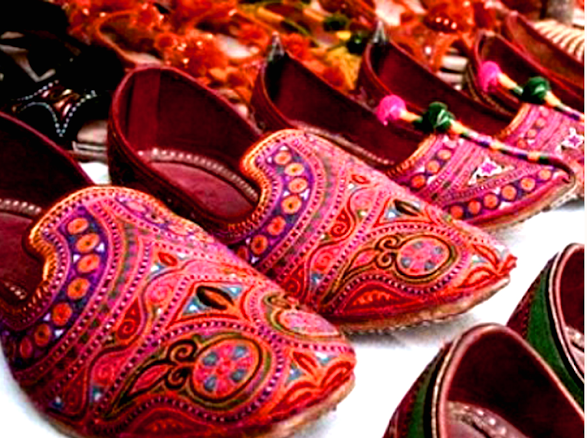



Comments
Post a Comment